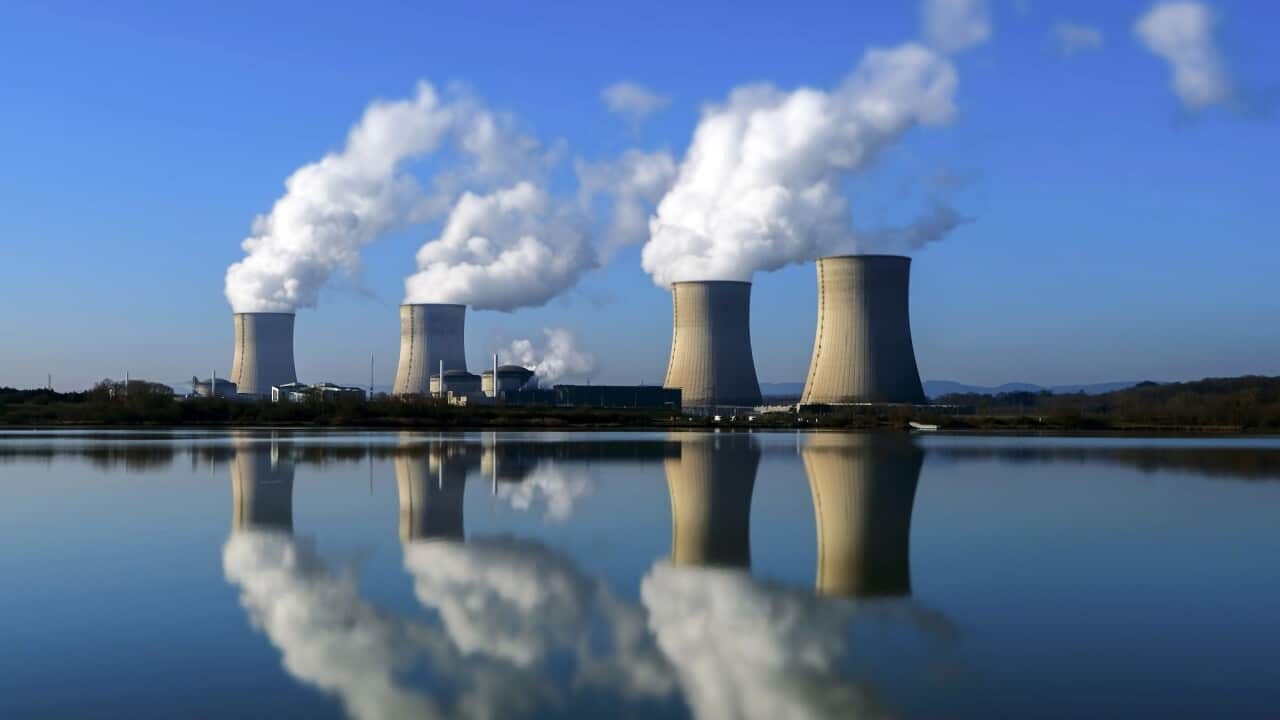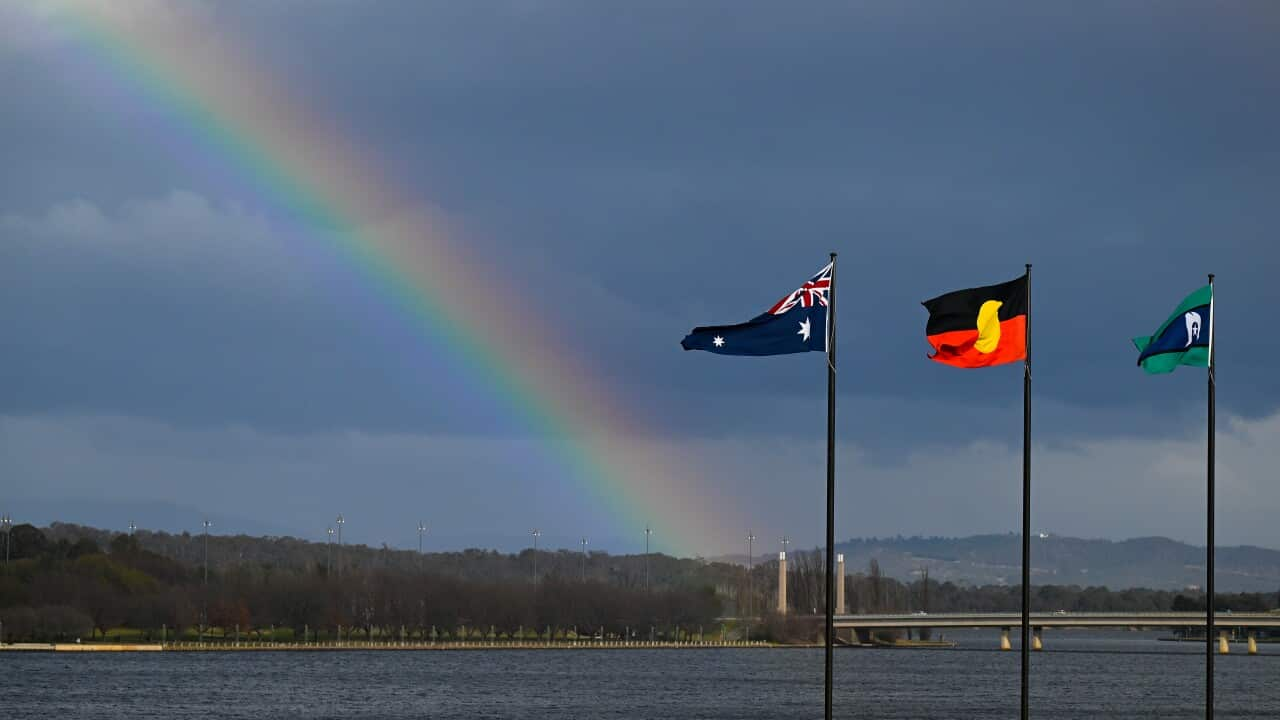TRANSCRIPT
It's long split the nation.
Australia came close to embracing nuclear energy in the late 1960s when the-then Liberal Prime Minister John Gorton proposed the construction of a nuclear power plant in Jervis Bay.
The project was ultimately abandoned.
But now, with a looming federal election and new data released by national science agency, the CSIRO, the debate rages on.
It's been reignited once again at the National Press Club (22 May), with the Opposition Treasury spokesperson Angus Taylor saying nuclear power is a major part of the policy platform the Coalition is taking to the next federal election.
"There's a lot in this policy, but it's is a big shift. And I would say the most profound shift in energy policy in my lifetime, and so it's why we're working through it meticulously."
It's a shift the nation has never made before: proposing nuclear power in the clean energy transition.
But with little detail released, questions still loom, from potential sites to the price tag.
Earlier this year, Opposition leader Peter Dutton proposed Australia should be adopting nuclear power.
But Prime Minister Anthony Albanese is unconvinced.
"Well it just doesn't make sense...The fact is that the markets have spoken. The market is saying that renewables are six times cheaper than new nuclear power energy and that is why no-one is putting their hand up and saying, we will finance these reactors."
But what is the potential for nuclear to be part of Australia's energy mix in the future?
The CSIRO's newly-released annual GenCost report gives the clearest idea yet of how much large-scale nuclear would cost.
It estimates a standard one-megawatt large nuclear power station would cost more than eight billion dollars, and wouldn't be operational until at least 2040.
CSIRO chief energy economist Paul Graham says given Australia doesn't have a nuclear industry, the initial cost would likely double.
"This is the first time we've included large -scale nuclear in the GenCost report. And what we found was it is cheaper than some of the smaller scale nuclear designs that we're looking at but it's still one and two and half times more costly than renewables. Whenever we build something for the first time it can have premium of up to 100 per cent so the first plant would cost anywhere between 16 to 24 billion dollars."
But could nuclear power, which generates almost no greenhouse emissions, eventually play a role in Australia's path to net zero?
Nuclear power plants operate in more than 30 countries and generate around 10 per cent of the world's energy.
The United States, France, China are among the biggest consumers.
In Australia, however, nuclear power generation is prohibited by law.
The coalition wants to lift that moratorium and see the construction of nuclear power stations at the sites of retiring coal stations.
Mr Dutton says he has six or seven potential sites in mind for nuclear power plants - and he plans to reveal them soon.
Dr Dylan McConnell is a renewable energy and energy systems analyst at the University of New South Wales.
"I can see the attraction of putting nuclear plants where coal plants are. However, when you start going into the details, the idea doesn't quite stack up. And then are some challenges - particularly around cost and timeline that need to be thought about."
He says overturning the ban, regulation, certification and construction will drag out the process.
"It would be highly unlikely for Australia to have a single kilowatt hour of energy from nuclear power until at least the 2040s because of the need to set up the various legislative frameworks but also go through the process of then actually constructing them. These are long-term, long-lead time projects. And we don't have the institutional structure or regulatory frameworks to actually do this right now."
There are two types of nuclear power generation.
Emeritus professor of physics Ken Baldwin, an energy expert at the Australian National University, explains.
"One is conventional, large scale, nuclear reactors which traditionally, are the same sort of size as coal and gas fired power stations, or even larger. And their main issue is you need several of them to cover the gaps for routine maintenance and down time. Plus they are not readily rampable..l.In other words they can't be turned off and on quickly to allow for changes in demand, for example at peak hours in the evening."
Then, he says, there are small modular reactors - often proposed to compliment renewable energy when it comes to decarbonising the last few per cent of the electricity sector.
"There are a couple of small modular reactors in Russia and China and so we don't have access to the data on economics and performance for those ones. And there was one recently that was being proposed in the United States which has had cost overruns and so that's now being withdrawn. So until these see the light of day and we have the data on the economics and performance of these small modular reactors, it's going to be very difficult to estimate what the true cost is going to be for future small modular reactors around the world, including in Australia."
Dr McConnell also highlights the challenges.
"They currently don't exist in the Western world. And they face significant challenges in development and cost. And they are unlikely to be available, in the countries they are being developed, until the 2030s, let alone in Australia."
The CSIRO report also took into account the cost of building thousands of kilometres of transmission lines required, costing about $40 billion.
That's nearly twice as expensive as the cost of renewable energy.
Renewables cost between $83 to $120 dollars per megawatt hour.
While nuclear power - from large scale plants - costs up to $233.
Professor Baldwin says there may be a "slight window of opportunity" in the 2040s as a way to decarbonise the last one or two per cent of the electricity grid.
"Decarbonising the last couple of per cent of the electricity network is going to be very difficult and indeed it will be very expensive for renewable technology to do that. Which is why other technologies might then become cost competitive, including small modular reactors, including gas with carbon capture and storage and potentially other forms as well."
That's why some climate advocates, including Dr Andrea Leong from WePlanet Australia, want to see the ban on nuclear power generation lifted.
"Since nuclear energy is a low carbon energy source, it should be on the table with renewable energy sources. And we need to start talking about clean energy, low carbon sources of energy that can help Australia meet its climate targets."
Social licence is also a consideration: getting Australians on board with nuclear power is another challenge.













